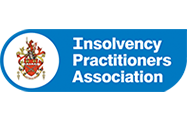Starting up a new business is a big decision. But it’s actually more than that, it’s a whole series of decisions and judgements that you need to take into consideration in conjunction with one another to ensure that your first year in business is a success. We believe that one of the most important decisions you will face is ensuring that you choose the right payment terms for your business. Choosing the right payment terms will have a direct impact on your cash flow and planning. So we’ve put together some of the most common payment terms to help you to make that decision with confidence.
What Types of Payment Terms are There?
Net Days
There are a number of different ways that you can request payment for your goods or services. Generally, the most common method for businesses is Net Days. This is when, within your invoices and written payment terms, you expressly state how many days after the date of the invoice that payment is due. You can choose whichever terms you like but usually, 30 days is the standard. However, if your cash flow projections show that you need payment sooner than some businesses opt for 15 days, but you can set the term for however many days suit your operations. After your chosen payment term has passed, if the invoice has not been settled then your customer’s account will be overdue.
Net Days With a Discount For Early Payment
Some customers will always leave it until the last day of your payment terms before they settle their invoice. If you want to incentivise your customers to pay sooner, then you could set your standard payment terms at 30 days but offer a small discount if the invoice is settled within 15 days. This is particularly helpful if you need to improve your cash flow within a short period of time. You can choose whichever discount amount and time frame suits your business best.
Cash on Delivery/Deposit and Remainder on Delivery
If your business will be selling physical goods, then you may choose to request payment on delivery or full payment upfront as part of the ordering process. Many businesses also opt for a deposit and then the remainder of the balance is paid upon receipt of the goods. This method of payment is particularly useful when creating bespoke items. Taking a deposit is a measure that can avoid cancellation of orders. You do not want to be left with stock that you cannot sell because it was customised specifically for a customer who no longer wants the items.
These payment terms are just some of the different ways that you can instruct customers to pay their invoices and there are many others available to you. It is important to consider the impact that each type of payment term will have, not just on your business but also your customers. It might be that you decide to try different methods with different customers during your first year in business, which is absolutely fine as long as you communicate this effectively.
Having clearly defined payment terms will go a long way in avoiding late payments and your business having to enter into debt recovery activities. We have spoken before about how important it is to include clear payment terms within contracts so that your customers know when to expect invoices to be issued, how long they have to clear them and how much interest will be charged if they make a payment past its due date.
If, despite setting payment terms, you are struggling to engage with your customers and receive payments on time, then contact our team on 0800 009 6106 or hello@mydebtrecovery.co.uk. We work on a no collection no fee basis so what’s stopping you?





